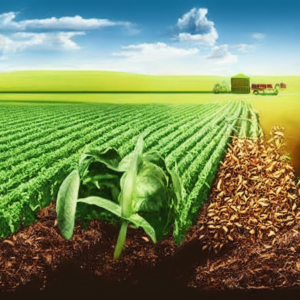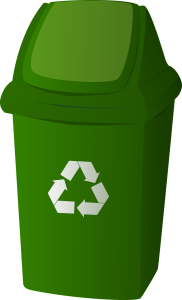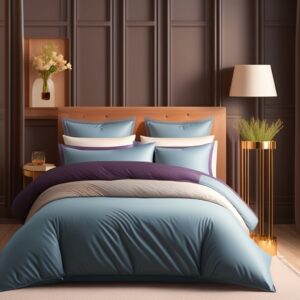Hey everyone! Let’s dive into how sustainable architecture can reshape the way we think about building maintenance. In our exploration of “How Does Sustainable Architecture Influence Building Maintenance?”, we uncover the brilliant ways eco-friendly designs and materials not only minimize our environmental footprint but also streamline the upkeep of our structures. From energy-efficient systems to durable, low-maintenance materials, sustainable architecture presents endless benefits. Together, we’ll discover how blending sustainable practices into our buildings can lead to long-term savings, reduced maintenance efforts, and a healthier planet for us all. Have you ever wondered how sustainable architecture influences building maintenance? As our awareness of environmental issues grows, many of us are asking the same question. In this article, we’ll dive deep into the world of sustainable architecture and its impact on building maintenance. We’ll cover the various ways sustainable design can enhance building longevity, reduce maintenance costs, and contribute to a healthier environment. So, let’s get started.

What is Sustainable Architecture?
Sustainable architecture, also known as green architecture or eco-friendly architecture, involves designing buildings that minimize environmental impact through energy-efficient and resource-conscious methods. It takes into account multiple factors, including the use of sustainable materials, energy efficiency, water conservation, and indoor air quality.
Core Principals of Sustainable Architecture
- Resource Efficiency: Utilizing materials and resources in a way that minimizes waste.
- Energy Efficiency: Reducing energy consumption through smart design and renewable energy sources.
- Water Conservation: Implementing systems that reduce water usage and promote recycling.
- Healthy Indoor Environment: Ensuring good air quality and natural lighting to improve occupant well-being.
- Adaptability and Durability: Designing buildings that can adapt to future changes and withstand environmental challenges.
Materials and Resource Management
One of the key aspects of sustainable architecture is the use of sustainable materials and efficient resource management. This approach has a significant impact on building maintenance.
Sustainable Materials
Sustainable materials are those that are eco-friendly, long-lasting, and require minimal maintenance. Some examples include:
| Material | Benefits |
|---|---|
| Bamboo | Rapid growth rate, strong and durable |
| Recycled Steel | Reduces waste, highly durable and recyclable |
| Reclaimed Wood | Repurposes old wood, adding unique character |
| Rammed Earth | Abundant, excellent thermal mass |
Resource Management
By reusing and recycling materials, we can significantly reduce the waste and resources required for new construction. Quality over quantity is the mantra here. Buildings made with durable, high-quality materials require less frequent maintenance and are more resilient to wear and tear.
Energy Efficiency and Maintenance
Energy efficiency is another cornerstone of sustainable architecture, and it plays a vital role in reducing maintenance costs and improving the overall building lifecycle.
Energy-Efficient Systems
Energy-efficient systems like solar panels, geothermal heating, and advanced insulation not only reduce the building’s energy consumption but also lessen the strain on these systems, thus needing less frequent maintenance. For example, LED lighting, which uses less energy and has a longer lifespan than traditional lighting, directly translates to lower maintenance needs.
Smart Technologies
Implementing smart technologies can lead to more efficient building maintenance. Systems can be automated to monitor energy consumption, detect issues early, and perform routine checks, minimizing the need for manual inspections and reducing downtime.
| System | Maintenance Benefit |
|---|---|
| Automated HVAC | Reduced manual checks, early detection of issues |
| Smart Lighting | Longer lifespan, energy savings |
| Building Management Systems (BMS) | Real-time monitoring, predictive maintenance |
Water Conservation and Maintenance
Water conservation is another critical aspect of sustainable architecture. Reducing water usage not only helps the environment but also impacts building maintenance.
Water-Efficient Fixtures
Installing water-efficient fixtures like low-flow toilets, faucets, and showerheads reduces the amount of water that building occupants use. This in turn reduces the wear and tear on plumbing systems, leading to fewer repairs and replacements.
Rainwater Harvesting and Greywater Systems
Rainwater harvesting and greywater systems can supply non-potable water for uses like irrigation, reducing the need for municipal water. Maintenance is simplified as these systems often include filters and pumps that are designed for longevity and efficiency.
| System | Maintenance Impact |
|---|---|
| Low-Flow Fixtures | Less strain on plumbing, fewer leaks and repairs |
| Rainwater Harvesting | Supplements water supply, reduces utility strain |
| Greywater Systems | Recycles water, reduces municipal usage |

Indoor Air Quality and Maintenance
A healthy indoor environment is a hallmark of sustainable architecture. Good indoor air quality not only benefits occupants but also influences how often systems need to be maintained.
Air Quality Solutions
Using materials that emit fewer volatile organic compounds (VOCs), installing proper ventilation systems, and using air purifiers contribute to maintaining excellent indoor air quality. These measures reduce the buildup of contaminants in HVAC systems and ductwork, leading to less frequent maintenance needs.
Natural Lighting and Ventilation
Design elements like large windows and open spaces enable natural lighting and ventilation, reducing the dependence on artificial systems that need regular maintenance.
| Feature | Maintenance Benefit |
|---|---|
| Low-VOC materials | Cleaner air, less frequent HVAC system cleaning |
| Natural Ventilation | Reduced reliance on mechanical systems |
| Daylighting | Less energy use, longer-lasting lighting fixtures |
Adaptability and Durability
A building designed with sustainability in mind is more adaptable and durable, meaning it can evolve with changing needs and withstand the test of time more efficiently.
Flexible Design
Buildings with flexible and adaptable designs can be easily updated as technologies advance and new requirements arise. This reduces the need for extensive renovations, saving both resources and maintenance costs.
Durability
Using materials and construction techniques that enhance the building’s durability can lead to fewer repairs and replacements. For instance, green roofs not only provide insulation but also protect the building’s structural integrity from harsh weather conditions.
| Feature | Maintenance Benefit |
|---|---|
| Adaptive Design | Reduces need for extensive renovations |
| High-Durability Materials | Longer lifespan, fewer repairs needed |
| Green Roofs | Provides insulation, protects building structure |

Cost Implications
One of the most frequently asked questions about sustainable architecture is its cost implications, both in terms of initial investment and ongoing maintenance.
Initial Investment
While sustainable materials and technologies may have higher upfront costs, they frequently offer long-term savings. For example, energy-efficient systems may be more expensive initially, but the reduction in utility bills and maintenance expenses over time can result in significant savings.
Long-Term Savings
The reduced need for maintenance and lower operational costs make sustainable buildings a smart financial investment in the long run. Fewer repairs, longer-lasting materials, and efficient energy use all contribute to reducing the overall cost of building maintenance.
| Cost Aspect | Initial Cost | Long-Term Savings |
|---|---|---|
| Sustainable Materials | Higher | Longer durability, fewer replacements |
| Energy-Efficient Systems | Higher | Lower utility bills, reduced maintenance |
| Water-Efficient Fixtures | Similar to standard | Reduced water bills, less plumbing wear |
Challenges and Considerations
Despite the numerous benefits, sustainable architecture isn’t without its challenges. These considerations are essential for making informed decisions.
Integration with Existing Structures
Retroactively integrating sustainable features into existing buildings can be complex and expensive. It often requires careful planning and substantial investment, although the long-term benefits can make it worthwhile.
Availability of Materials
Eco-friendly materials might not be readily available everywhere, leading to longer project timelines or higher costs due to shipping.
Education and Expertise
Proper education and expertise are crucial for implementing sustainable practices effectively. Building designers, architects, and maintenance staff need to be well-versed in sustainable techniques and technologies.
Sustainability Certifications
Attaining sustainability certifications like LEED, BREEAM, and WELL can validate a building’s green credentials but also involve rigorous standards and additional costs.
Certification Benefits
Certifications can enhance a building’s market value and appeal. They provide a framework for sustainable practices, ensuring that buildings meet environmental and efficiency standards.
| Certification | Benefits |
|---|---|
| LEED | Market recognition, energy efficiency, lower costs |
| BREEAM | Comprehensive assessment, market advantage, improved performance |
| WELL | Focus on health and wellbeing, enhanced indoor environment |
Conclusion
Sustainable architecture profoundly influences building maintenance in various ways. By integrating sustainable materials, efficient systems, water conservation techniques, and smart technologies, buildings become more durable, adaptable, and cost-effective to maintain. The financial and environmental benefits far outweigh the initial investment and potential challenges.
In embracing sustainable architecture, we can create buildings that are not only kinder to the planet but also easier and more economical to maintain. So, as we move forward, let’s keep sustainability at the forefront of our architectural endeavors. It’s a win-win situation for us and the environment.



